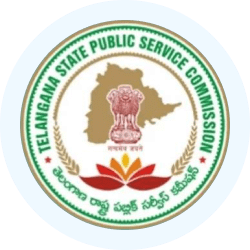Art Forms of Telangana | Telangana State PSC (TSPSC): Preparation Course - TSPSC (Telangana) PDF Download
Introduction
- Telangana boasts a rich cultural tapestry with over 160 folk art forms originating from the region.
- These art forms are predominantly upheld by traditional artist communities, many of whom follow the 'Tyaagam' tradition, entitling them to support from their respective communities in the form of financial aid or other contributions.
- While certain classical art forms in Telangana garnered royal patronage and refined over time, a myriad of art forms practiced by diverse communities have contributed to the region's cultural mosaic.
- During the Kakatiya rule, dance forms like Perini Sivatandavam, also known as the 'dance of warriors,' emerged. Meanwhile, commoners devised storytelling traditions like Golla Suddulu, Oggu Kathalu, and Gotralu to address everyday challenges.
- Intermingling of various art forms led to the evolution of new forms like the inclusive 'Dhoom Dham,' often portraying themes of struggle and exploitation.
- Chindu Bhagavatham, a variant of Yakshagana popular in Telangana, is a theatrical art form blending dance, music, dialogue, attire, makeup, and stagecraft in a distinctive manner. The term 'Chindu' translates to 'jump' in Telugu, reflecting the energetic nature of its performances.
- Furthermore, Qawali, Ghazals, and Mushairas flourished under the patronage of rulers like the Qutub Shahis and Asafjahis in the vicinity of Hyderabad, showcasing the region's diverse artistic heritage.
Narrative Communities in Telangana
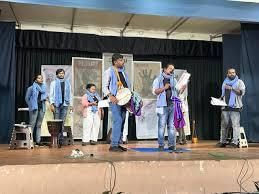
Before the advent of electronic media, storytelling and traditional arts served as the primary forms of entertainment and education for rural communities in Telangana. Various sub-communities within each village were responsible for recounting tales and genealogies of the dominant caste or community. These storytellers traveled to different villages to share their narratives, predominantly found in districts like Nizamabad, Medak, Karimnagar, Warangal, Khammam, Nalgonda, and Mahabubnagar.
Key Narrative Communities
- Addamsingvallu
- Veedhi Bhagavatulu
- Budige Jangaalu
- Chinduvallu
- Dasarivallu
- Ganjikootivallu
- Gollasuddulavallu
- Gondaleelu
- Jangaalu
- Kakipadigelavallu
- Koonapulivallu
- Maladasarulu
- Mandechulu
- Matlevallu
- Oggulu
- Pichukakuntlu
- Pondavulavallu
- Sharadagallu
In addition to these, there exist non-caste-specific groups like batukamma teams, burrakatha teams, kolatam teams, and yakshganam teams. These teams exhibit diverse performance styles and presentation methods based on their traditional training.
Methods of Presentation of Art Forms of Telangana
- Short narratives: These are stories meant for a single presentation, such as Ellamma katha and Mallanna katha.
- Long narratives: Presented over a period of 3 to 30 days, for example, Katamaraju katha.
- Narratives presented by means of pictures: Stories like Kakipadigela stories and Pandavulavalla stories fall into this category.
- Narratives presented through clay and wooden figures: An example includes Mandechula stories.
- Stories rendered by two lead narrators: One instance is Oggu.
- Stories presented by four or more narrators donning various roles on the spot: This style is exemplified by yakshaganam.
- A single narrator, usually accompanied by one or two musical instruments: An illustration is Budige Jangam.
- A group of actors performing at a street corner: For instance, veedhi bhagavatam.
- A group of singers making a presentation by clapping or striking sticks against each other as they move around: Examples are batukamma and kolatam.
Current Scenario
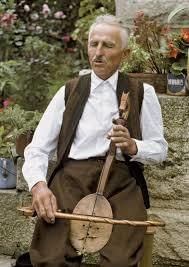
- A historical examination of this oral literature evokes immense pride among patrons and storytellers. However, in contemporary times, these traditions have often been viewed as 'primitive.' Despite this, these stories represent a rich reservoir of traditional cultures, transmitted orally, through performances, and material artifacts by so-called 'primitive people.
- In the wake of modernization and globalization, the oral literature and stories of these communities are fading away. The lack of listeners has rendered these oral traditions dormant. Storytellers from these communities are scarcely visible in the modern landscape. Nevertheless, there are differing perspectives on this matter.
- For decades up to the year 2000, these oral traditions were neglected, marginalized, and suppressed as ruling authorities failed to connect with rural art forms and appreciate Telanganites' culture and sensibilities. However, with the emergence of the Telangana movement and the subsequent formation of the state, there has been a significant resurgence of these art forms. A cultural renaissance has unfolded, with art forms like Perini, Oggu Katha, Chindi Yakshagaanam, Hari Katha, Burra Katha, Sharda Kathalu gaining prominence once again.
A Compendium of Tales, Legends, and Stories
- Derived Narratives from Indian Epics and Puranas:
- Stories sourced from the Ramayana, the Mahabharata, and other Indian epics often exhibit significant deviations from the original narratives.
- Some tales serve as direct continuations or expansions of the epic and puranic stories.
- Diverse Puranic Lore:
- Estimates suggest the existence of around thirty caste-specific puranas in Telangana.
- The origins of these puranas and non-derivative stories are challenging to trace, likely stemming from ancient times and transmitted orally through generations within narrative communities.
- Local Heroic Legends:
- Legends celebrate the valor and magnificence of local heroes, village deities, and the presiding deities of specific temples where annual fairs are conducted.
- Various narrative modes such as Chirutala, yaksha (yakshaganam), oggu, natakam, and Jangam are employed in these stories.
Key Folklore Topics
- Akkalabhairavi katha
- Anumula Brahmareddy katha
- Aremarateela charitra (yaksha)
- Balaraju
- Balasanyasamma
- Balavati katha
- Batukamma katha
- Bayyabai katha
- Beerappa katha
- Challapuramma katha
- Dangneya (natakam)
- Desinguraju katha (Jangam)
- Dharmangada (yaksha)
- Edla Ramadasu charitra
- Ektang katha
- Ellamma katha
- Gavunada Bhallana charitra
- Gowramma katha
- Guruvunu Minchina Shishyudu
- Harabandiraju
- Jiyyarani katha
- Kalinga Maharaju katha
- Kambhojaraju katha (yaksha, Jangam)
- Kanakadurgamma
- Kanakatara (natakam)
- Kanthamati charitra (yaksha)
- Katamaraju katha
- Kollapuri Lakshmi
- Kondala Raya charitra (Jangam)
- Lakshmidevamma katha
- Madalasa Parinayamu (yaksha)
- Madanakamaraju katha
- Mallanna katha (yaksha, oggu)
- Mandata charitra (yaksha)
- Matapuranamu katha
- Maya Subhadra (yaksha, natakam)
- Mohini Rukmangada (chirutala)
- Mugguru Marateelu
- Mynavati
- Myravana (chirutala, yaksha)
- Nagadi Kooturu
- Nalla Thangal katha (Jangam)
- Nallapochamma katha
- Patala Homam
- Peddadasu charitra
- Poleramma katha
- Pundmeeka charitra
- Radhabhai Kaloji katha
- Raja Hamsa
- Raja Nalaneela
- Rajakarlu
- Rambha Rampala charitra (chirutala)
- Renuka Yuddam
- Rukmabhai charitra (yaksha)
- Sanyasamma katha (Jangam)
- Sookshmanarayana (natakam)
- Sri Lakshmamma katha (Jangam)
- Stree Sahasamu
- Tabeluraju
- Veera Timmamma katha
- Vichitra Maharaju
- Virata Jangam katha (Jangam)
Patam Katha
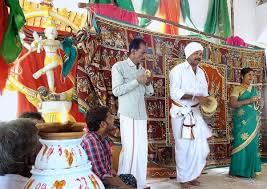
- Patam Katha refers to scroll narratives depicting tales from the Ramayana, the Mahabharata, and the Puranas. It also integrates contemporary issues with mythological stories.
- There exist approximately 12 forms of Patam Katha.
Hari Katha
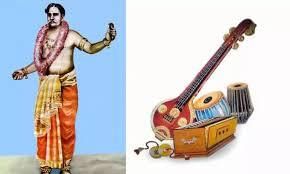
- Hari Katha, which translates to 'stories of Lord Vishnu,' combines storytelling and poetry to recount narratives of Narayana and Puranic stories.
Oggu Katha

- Oggu Katha, primarily performed by the Kuruma and Yadava communities of Telangana, showcases tales of their caste gods like Renuka Yellamma, Beerappa, and Mallana.
- This tradition involves dance moves, floor paintings (patnam), and concludes with celebrations or vinyasams.
Burra Katha
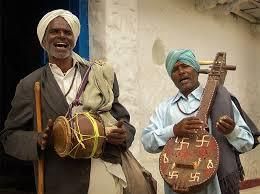
- Burra Katha, contrasting with Harikatha, is an art form embraced by common people rather than the elite. It is known by various names in different regions, like tamboorakatha and saradakatha in Telangana.
- Most narratives in Burra Katha pay homage to freedom fighters and are typically derived from the Ramayana and Mahabharata.
- The storytelling is accompanied by the use of the bura, a primitive musical instrument similar to the mrudangam.
Gurram Vallu
- Gurram Vallu, associated with the Malas, recounts the genealogy and gotras of the community.
Chiruthala Ramayanam
- Chiruthala Ramayanam involves reciting episodes of the Ramayana while playing Chirutha.
Gaurajetty puranam
- Gaurajetty puranam is an oral tradition associated with the Gaura community.
Preservation of Folk Tales and Legends
- Many Telangana tales and legends are at risk of being lost as they are primarily preserved through oral tradition.
- Scholarly works such as Janapada Nrityakala and Janapada Geya Gathalu have attempted to document these narratives.
- However, more efforts are needed to record, transcribe, and preserve these stories for future generations.
- To ensure preservation, it is essential to locate and collaborate with community members who hold these narrative traditions.
- Recordings should be made on audio tapes and VCDs, transcribed into readable texts, and potentially translated into multiple languages for wider accessibility.
- Materials should be meticulously documented with detailed introductions and archived for posterity.
Architecture of Art Forms of Telangana
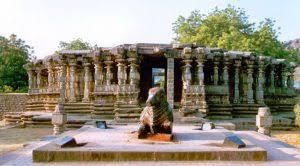
- Historical Background of Telangana Architecture: Architecture in Telangana flourished between the 10th and 12th centuries under the rule of the Chalukyas and Kakatiyas. Notable monuments such as the Thousand Pillar Temple, Alampur Temples, and Ramappa Temple were constructed during this period.
- Thousand Pillar Temple: The Thousand Pillar Temple, a renowned ancient temple in Telangana, showcases exceptional architectural prowess attributed to the Kakatiya Vishwakarma Sthapathis. This masterpiece of Kakatiyan artistry was believed to be commissioned by King Rudra Deva in 1163 AD.
- Architectural Significance: Featuring a unique design, the temple comprises one thousand pillars arranged in a manner that ensures an unobstructed view of the deity from any point within the temple complex.
- Artistic Detailing: The intricate carvings on the pillars exemplify the distinctive Kakatiyan architectural style prevalent during the 12th century.
- Historical Impact: Unfortunately, the temple suffered damage during the Tughlaq dynasty's incursion into South India, reflecting a blend of historical significance and architectural grandeur.
- Fortifications in Telangana: Notable forts like the Warangal Fort and Bhongir Fort, constructed during the reign of the Nizams and Mughals, stand as testaments to the military and architectural prowess of the era.
- Golconda Fort: Built under the patronage of the Golconda Kings, the Golconda Fort in Telangana showcases the exquisite artistic beauty synonymous with the Mughal era, offering a glimpse into the region's rich architectural heritage.
Carved Pillar at Thousand Pillar Temple
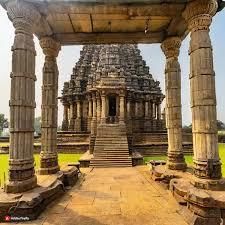
- The Thousand Pillar Temple, situated in Telangana, is a venerable ancient temple of South India constructed during the reign of the Kakatiya Dynasty of Warangal. This temple stands as a testament to the architectural prowess of the ancient Kakatiya Vishwakarma Sthapathis, showcasing remarkable mastery in craftsmanship.
- The intricately carved pillars of the Thousand Pillar Temple exemplify the distinctive Kakatiya Art style. According to historical accounts, it is believed that King Rudra Deva commissioned the construction of this temple in 1163 AD. Reflecting the architectural splendor of the Kakatiyan era, the temple represents the epitome of the 12th-century Kakatiyan style of architecture.
- Unfortunately, the Thousand Pillar Temple fell victim to the ravages of history when it was destroyed by the Tughlaq dynasty during their invasion of South India. Despite this setback, the temple remains an architectural marvel, comprising a main temple structure along with other ancillary buildings.
- A remarkable feature of the Thousand Pillar Temple is its namesake— the presence of one thousand pillars within the temple complex. Remarkably, these pillars are arranged in such a way that they do not obstruct the view of the deity housed in the main temple from any vantage point within the complex, allowing worshippers to behold the divine presence seamlessly.
Architecture in Telangana Temples of Alampur
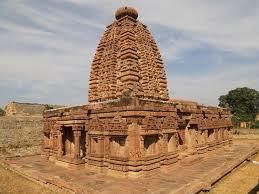
- Alampur houses nine temples showcasing the rich Chalukya architecture from the 7th century A.D.
- All temples are devoted to Lord Shiva, displaying intricate architectural marvels.
- Constructed by the Badami Chalukya rulers, these temples stand as a testament to their patronage of art and architecture.
- Despite the passage of time, these temples remain steadfast, highlighting the nation's architectural heritage.
- The temples blend Northern and Western Indian architectural styles, distinct from the prevalent Dravidian style in the region.
- Featuring curvilinear shikharas adorned with miniature architectural elements, the temples resemble the rock-cut style in plans and decoration.
- The Alampur Navabhrama Temples are historically significant, showcasing exceptional architectural prowess.
Warangal Fort
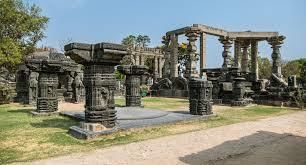
- Warangal Fort's origins trace back to at least the 13th century CE, believed to be constructed during the Kakatiya rule's latter half.
- Commissioned during the reign of Rudramadevi and Prataparudra, the fort boasted gateways, square bastions, and circular earthen walls before Prataprudra's demise in 1323.
Salar Jung Museum
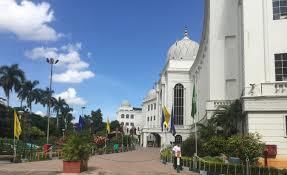
- The Salar Jung Museum offers a diverse collection of art and artifacts.
- It houses a wide array of historical pieces, ranging from sculptures to paintings and textiles.
- Visitors can explore exhibits that depict the cultural and artistic evolution of the region over centuries.
- Noteworthy items include rare manuscripts, exquisite jewelry, and ancient weaponry.
- Salar Jung Museum is a significant repository of Indian art from the Nizam rule era.
- Located at Darushifa, on the southern bank of the Musi River in Hyderabad, the museum's collection originates from the Salar Jung family.
- It proudly holds the distinction of being the third largest museum in India, showcasing the most extensive one-man collections of antiques globally.
Sculpture
Ramappa Temple
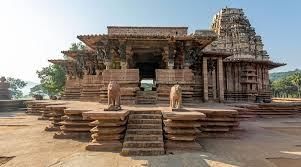
- The Ramappa Temple, situated in Palampet village, Venkatapur Mandal, dates back to the 13th and 14th centuries.
- Commissioned by General Recherla Rudra under Kakatiya ruler Ganapati Deva's reign, this Shivalaya temple is named after its architect, Ramappa.
- Dedicated to the deity Ramalingeswara, an incarnation of Shiva and a revered figure in Hindu mythology, it took four decades to complete.
- Renowned for its intricate carvings and unique architecture, the temple stands on a raised star-shaped platform, with its walls, pillars, and ceilings adorned with sculpted figures from Hindu lore.
- The temple's roof, constructed using light bricks, possesses the remarkable quality of being able to float on water.
Telangana Talli
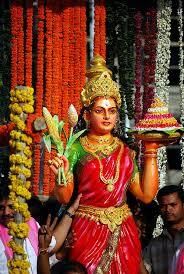
- Telangana Talli symbolizes a mother goddess for the people of Telangana, akin to Telugu Talli. The statue, designed by Byroju Venkataramana Chary, portrays her holding a bathukamma and corn. Chary, honored by Chief Minister K Chandra Shekhar Rao in 2015, hails from Nirmal city, Adilabad district.
Telangana Martyrs Memorial
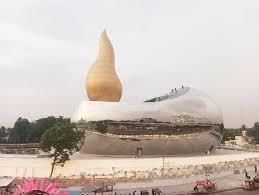
- Also known as Gun Park, this monument commemorates the 369 students who lost their lives during the 1969 agitation for a separate Telangana state.
- Every 2nd of June, Telangana Martyrs Memorial Day is observed across the state. Situated near the Public Gardens in Hyderabad, it holds significance as a symbol of the Telangana agitation.
- Aekka Yadagiri Rao, a renowned sculptor and former JNTU Professor of Sculpture, designed and built this monument.
|
80 docs|74 tests
|
FAQs on Art Forms of Telangana - Telangana State PSC (TSPSC): Preparation Course - TSPSC (Telangana)
| 1. What are some famous narrative communities in Telangana? |  |
| 2. What is the significance of the Carved Pillar at the Thousand Pillar Temple in Telangana? |  |
| 3. Which historical site in Telangana is known for its unique architecture and design? |  |
| 4. What can visitors expect to see at the Salar Jung Museum in Telangana? |  |
| 5. How does the architecture of Telangana temples in Alampur showcase the region's cultural heritage? |  |




